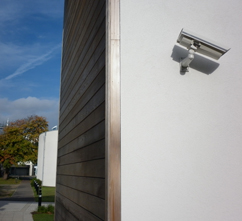Pat Allen, Chairman of the Fire & Security Association (FSA), looks at two challenges facing the modern security solutions provider.
If I had to choose two issues that will cause problems for the industry now and in the future, I’d go for the fact that clients are becoming increasingly aware of technology and increasingly attempting to practice value engineering.
Some might say these aren’t problems at all, and that surely clients should be educated and determined to get the most from their systems. I wholeheartedly agree, but issues can arise when the client’s enthusiasm for technology or focus on cost rather than value impacts on their choice of security systems. When this happens, it can potentially damage the relationship they have with their security solutions provider and compromise the security of their businesses or homes.
For instance, when a client is very aware of what the latest top performing or most commonly installed system is, there’s a risk that they may want that particular system installed, rather than one that solves the specific security issue they face. This becomes a problem if the system they want to install doesn’t match the requirements identified in the risk assessment carried out by the security solutions provider, as it could put the client’s business in danger of security breaches and the financial, reputational and operational consequences these cause.
The other issue our industry faces is a growing trend for companies to attempt to practice value engineering – but in a way which doesn’t truly represent the term. In its purest form, value engineering puts an equal emphasis on function and cost, but there are instances where it is currently being used as a cost cutting exercise. This may deliver initial savings on security systems, but we all know this is a short-term approach and one that has consequences for the building’s end user, their bottom line and, in some cases, their reputation if the system fails to perform the role it was intended for.
The only option if we find ourselves in either of these situations is to try and take the client back to their initial objectives, and explain to them how cutting the cost of their security system or going against our recommendations would mean these objectives wouldn’t be fulfilled. By showing them the results of the risk assessment we have carried out for them, we can then demonstrate we have identified how to mitigate the risk and ramifications of the potential security breaches they face.
This approach does make the job more challenging, but it puts us in a position where we can emphasise our commitment to offering the client a bespoke solution to their particular problem, which usually sets up a good relationship for the future, and can potentially lead to repeat business – and even referrals.
If the client still insists on a cheaper system or one that wouldn’t mitigate the security risks that have been identified, we can find ourselves having to decide whether or not we want to carry on with the job. This is not an easy position to be in – but neither is asking the client why they want a particular system or why they want to cut costs. However, asking those questions presents an opportunity to demonstrate our commitment to delivering value, service and innovation – all of which can help our clients, our businesses and the reputation of the industry both now, and in the future.










